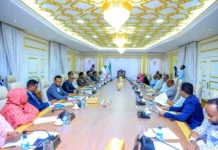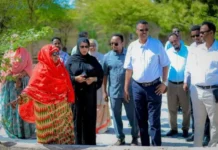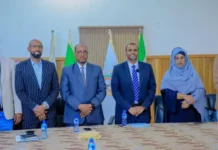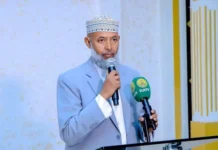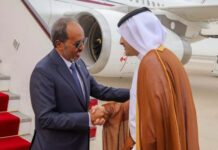Highlights
• In the first half of 2018, the humanitarian situation in Somalia remained grave due to residual impacts of drought, ongoing displacement, conflict and seasonal floods. Heavy rainfall in April and May resulted in severe flooding in central and southern regions affecting over 830,000 people and displacing 290,000 of them. On 19 May, Cyclone Sagar hit western Somaliland, impacting close to 170,000 people. The floods and the cyclone destroyed crops, impacted shelters and critical service infrastructure, including water, health, nutrition, and education facilities.
• Over 5 million people are still in need of humanitarian assistance throughout Somalia, including 2.8 million children. Although the food security outlook is projected to improve in the coming months due to improved rain outcomes and sustained humanitarian action, malnutrition rates across Somalia remain among the worst in the world, particularly in areas hosting internally displaced persons (IDPs). Between January and June 2018, an estimated 119,505 children affected by severe acute malnutrition (SAM) were enrolled in treatment programmes, reaching 70 per cent of the 2018 planned caseload.
• In 2018, UNICEF has provided clean water to over 800,000 people; critical life-saving health servicesto 312,000 people; quality education to 50,000 children; protection services including psychosocial support to 16,000 children and regular cash assistance to more than 18,000 households to meet life-saving needs.
Situation Overview and Humanitarian Needs
In the first half of 2018, the humanitarian situation in Somalia remained grave due to residual impacts of drought, ongoing displacement, conflict and seasonal flooding. Heavy rainfall in April and May resulted in severe flooding along the Shabelle and Juba river basins in central and southern regions of Somalia. Over 830,000 people were affected and 290,000 temporarily displaced because of the floods, with Hiraan, Gedo and Lower Juba regions being the worst affected. On 19 May, Cyclone Sagar made landfall in western Somaliland, impacting close to 170,000 people, mainly in Awdal region. The floods in the south and the cyclone in the north destroyed crops, destroyed shelters and social service infrastructure, including water, health, nutrition, and education facilities. There have been increased trends in acute watery diarrhoea (AWD)/cholera in recurrent areas, with new cases being reported in areas along the Juba and Shabelle rivers. Agencies have prioritized mobile teams and rapid resumption of services to meet needs. Nonetheless, overall AWD/cholera and measles cases remain significantly lower than in 2017, largely thanks to extensive vaccination efforts along with expanded WASH service delivery accompanied by large scale hygiene promotion throughout the country.
Beyond the acute impact of the cyclone and floods, 5.4 million people are still in need of humanitarian assistance throughout Somalia, including 2.8 million children. Although the food security outlook is projected to improve in the coming months because of the improved crop yields and sustained humanitarian action, malnutrition rates across Somalia remain among the worst in the world, particularly in areas hosting IDPs. In total, about 1.2 million children under-5 are projected to be acutely malnourished in 2018 and of them, 232,000 are expected to be suffering from severe acute malnutrition.Over 4.4 million people need humanitarian WASH services, with 3.5 out of 5 people without adequate water to meet basic needs. More than 5.7 million people require basic health services, including critical needs in maternal and child health, as one in seven Somali children die before the age of 5. Disease outbreaks such as AWD/cholera and measles continue to represent a major threat to children with over 5,892 suspected measles cases (72 per cent being children under-5) and 3,590 cases of AWD/cholera with 26 deaths reported in 2018. 2 Over 3 million children, out of 4.9 million in the country, are estimated to be out of school. More than 2.6 million people have been displaced, including over 1 million in the last year alone3 and displacement flows continue at critical levels. Exclusion and discrimination of socially marginalised groups continue to exacerbate high levels of acute humanitarian needs. More than 76 per cent of recorded gender-based violence (GBV) survivors are reported to be from IDP communities. Grave violations against children continue at worrying rates with abductions, recruitment and use, as well as killing/maiming reported as the primary concerns.
Relief Web



